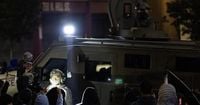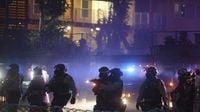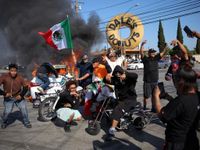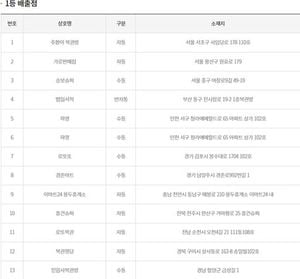Los Angeles has been the epicenter of fierce clashes and escalating tensions following a series of aggressive immigration enforcement operations conducted by federal authorities. In response to widespread protests and violent confrontations, President Donald Trump authorized the deployment of 2,000 California National Guard troops to the city, a move that has sparked sharp criticism from local officials and intensified the political standoff.
The unrest began on June 6, 2025, when Immigration and Customs Enforcement (ICE) agents launched coordinated raids across Los Angeles, targeting workplaces in the fashion district and other locations. These operations resulted in the detention of over 100 individuals, including some with prior criminal histories, but also many who are part of immigrant communities that view the actions as indiscriminate and deeply unsettling.
According to the American Civil Liberties Union of Southern California, hundreds of people, including children, were taken into custody at the Edward Roybal Federal Building in downtown Los Angeles. The arrests ignited protests that quickly grew in size and intensity, with demonstrators gathering near federal buildings and blocking entrances. The Los Angeles Police Department (LAPD) declared an unlawful assembly on the evening of June 6, warning that those who remained risked arrest.
Protests spilled into the following day, June 7, particularly in the city of Paramount, a heavily Latino community south of Los Angeles. There, clashes erupted near a Home Depot and a Department of Homeland Security facility where federal agents were staging. Protesters hurled rocks, bottles, and fireworks, while law enforcement responded with tear gas, flash-bang explosives, and pepper balls. Videos from the scene showed overturned shopping carts, burning debris, and a car set ablaze in nearby Compton.
U.S. Border Patrol Chief Michael Banks reported several arrests for assaults on federal agents, and FBI Deputy Director Dan Bongino announced efforts to identify individuals who threw rocks at law enforcement vehicles. One Border Patrol agent was injured by a rock that shattered a vehicle windshield, highlighting the dangerous nature of the confrontations.
In the face of escalating violence, President Trump signed a presidential memorandum deploying 2,000 National Guard members to Los Angeles to address what the administration described as "lawlessness". White House Press Secretary Karoline Leavitt criticized California’s Democratic leadership, accusing them of abdicating their responsibility to protect citizens. Defense Secretary Pete Hegseth further warned that if violence continued, active-duty Marines stationed at Camp Pendleton would also be mobilized, underscoring the administration’s readiness to escalate federal intervention.
Governor Gavin Newsom vehemently opposed the federal takeover of the California National Guard, calling the move "purposefully inflammatory" and warning it would "only escalate tensions." He emphasized that local authorities were fully capable of managing the situation and that there was no unmet need for additional law enforcement assistance. Newsom also directed the California Highway Patrol to deploy more officers to maintain public safety on highways but clarified that these forces would not assist in federal immigration enforcement.
Paramount Mayor Peggy Lemons echoed concerns about the handling of the situation, noting that the community’s fear of immigration enforcement activity had contributed to the unrest. She clarified that agents were staging operations rather than conducting active raids during the protests. Meanwhile, the Los Angeles County Sheriff's Department stated that its role was limited to traffic and crowd control and that it does not participate in immigration enforcement actions.
The protests have drawn sharp responses from city officials. Los Angeles Mayor Karen Bass condemned the ICE operations as tactics that "sow terror in our communities" and disrupt the city’s safety. She expressed anger over the raids and pledged coordination with immigrant rights groups to oppose the actions. Following the violence, Bass called for peaceful protests and condemned destruction, stating that those responsible for violence would be held accountable.
ICE Acting Director Todd Lyons criticized Mayor Bass and local police for their response to the protests, accusing them of siding with "chaos and lawlessness". Lyons claimed that over 1,000 rioters had surrounded and attacked federal buildings and that the LAPD had delayed its response. The LAPD refuted these claims, explaining that their response was hindered by federal agents’ use of chemical irritants and significant traffic congestion. They stated dispersal efforts began within 55 minutes of receiving calls.
The political fallout extends beyond local officials. Democratic Senate Minority Leader Chuck Schumer called for the immediate release of David Huerta, a prominent union leader arrested during the protests. Huerta, president of the Service Employees International Union California chapter, was detained and treated for injuries sustained while protesting, highlighting concerns over the treatment of detainees. Congressional representatives visiting detention centers reported overcrowding and inadequate conditions, underscoring the humanitarian challenges accompanying the enforcement operations.
Federal authorities have made clear that immigration enforcement will continue unabated. U.S. Attorney Bill Essayli warned that anyone obstructing federal agents would face arrest and prosecution, emphasizing the administration’s commitment to its immigration crackdown. The Department of Homeland Security reported that nationwide arrests reached 2,000 this week, with 118 in Los Angeles alone, including five linked to criminal organizations.
The aggressive enforcement reflects President Trump’s pledge to deport a record number of unauthorized immigrants, aiming to arrest at least 3,000 individuals daily. Critics argue that the operations have become indiscriminate, affecting many who have no criminal records and sowing fear within immigrant communities. Legal advocates and immigrant rights groups have mobilized rapidly, providing resources and legal assistance to those targeted.
The deployment of the National Guard under Title 10 authority places the troops under federal command, bypassing the state governor’s control—a move that is legally complex and controversial. California officials have questioned the legality of the federal government activating the Guard without state consent, noting that such authority is typically reserved for extreme circumstances like invasion or rebellion.
As protests continue, the situation remains volatile. Law enforcement agencies face the challenge of balancing public safety with respect for constitutional rights, while political leaders navigate a deeply divided landscape. The coming days will reveal whether the deployment of troops and increased federal presence will quell the unrest or further inflame tensions in one of America’s most diverse and dynamic cities.







